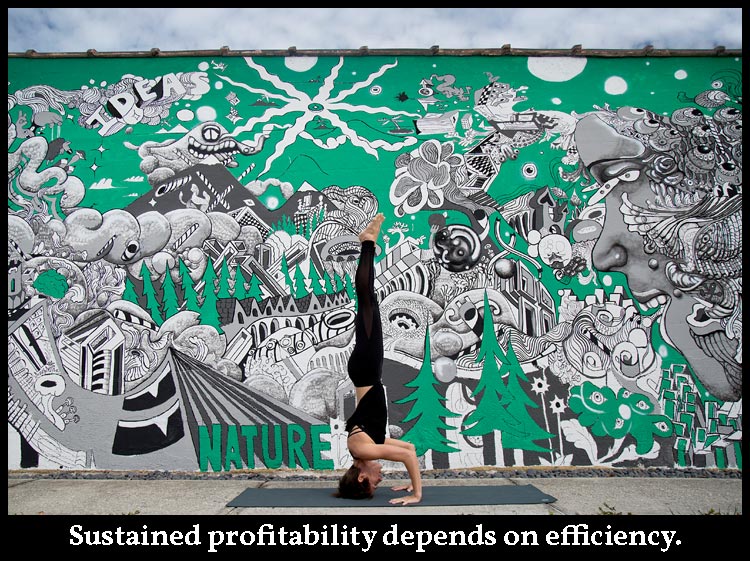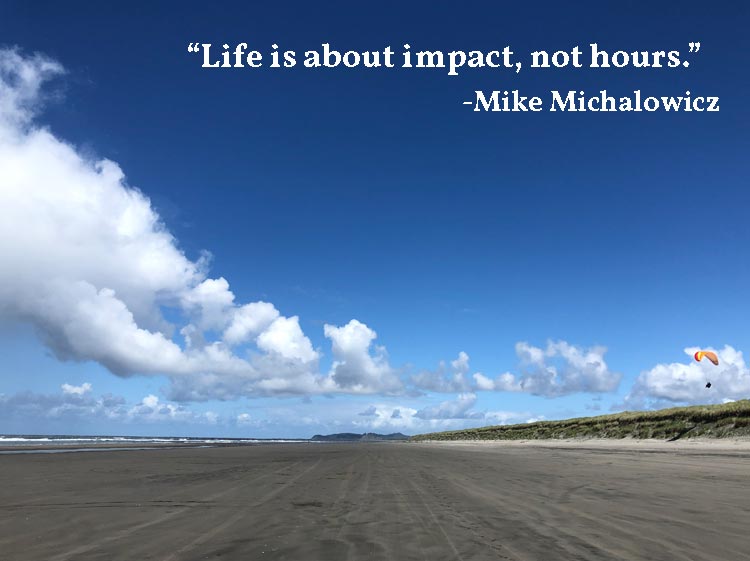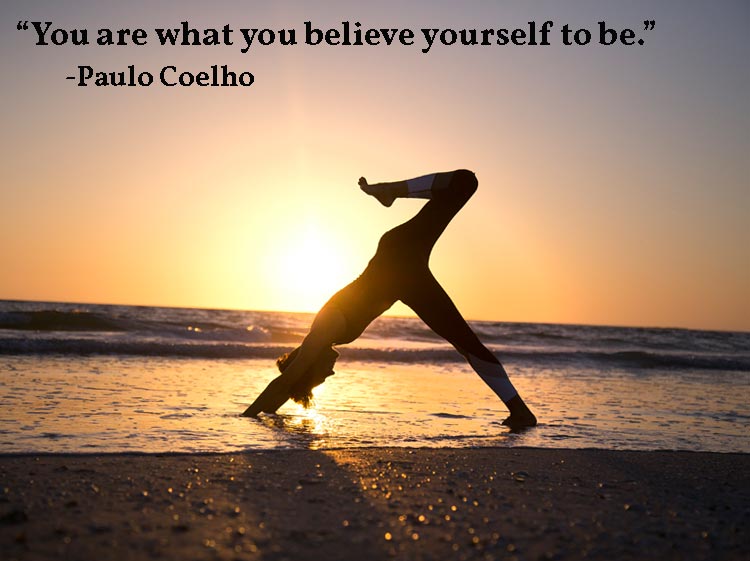 As a yoga professional, you’re on a lifetime journey. To stay your course and enjoy each step of the process, it’s important to design your growth purposefully. This is similar to planning an adventure. You look at your current starting point and figure out where you want to go. In this post, you’ll discover simple ways business analytics can clarify the next steps of your professional career–whether you’re a new yoga teacher or years into the industry.
As a yoga professional, you’re on a lifetime journey. To stay your course and enjoy each step of the process, it’s important to design your growth purposefully. This is similar to planning an adventure. You look at your current starting point and figure out where you want to go. In this post, you’ll discover simple ways business analytics can clarify the next steps of your professional career–whether you’re a new yoga teacher or years into the industry.
I’m a big fan of adventures, as you very well know. In fact, right now as I’m on a 3-week camping trip through the Pacific Northwest with my husband and Kai. We are traveling up the Oregon and Washington coastline first. Then we head east and visit Coeur D’Alene, Mt. Rainier National Park, and Bend, Oregon before heading home again.
Each day, our starting point and destination are different. Some mornings I wake up by the ocean, with a clear point of reference. Other times I’m so deep into the forest that I’m not sure which way is north. This means that our first task of the morning–after I’ve made my matcha green tea latte–is to look over the atlas and pick the best route for the day. Yes, we have to go old school here as many places we visit are void of cell reception.
My main point here is that the details matter. Just like mileage and road conditions matter on a road trip, business analytics help you navigate your yoga future.
Photo Credit: Ruben Mishchuk
WHAT ARE BUSINESS ANALYTICS?
Analytics is a business term that is defined as “the discovery, interpretation, and communication of meaningful patterns in data and applying those patterns toward effective decision making.” Said another way, analytics is a process you can use to maximize time, energy and resources in your yoga business. This process is broken into three basic steps.
- Step 1: Collect the data. This post will cover which information you’ll want to gather now, so tap into your inner scientist and be ready to dissect a very interesting subject–YOU and your yoga business!
- Step 2: Analyze the data. Once you have answers from Step 1, you’ll see what is working in your yoga business, and what’s not. Then,
- Step 3: Create a strategy for success. Since you want to position yourself for success in the yoga industry, use the patterns discovered in Step 2 to create a plan of action.
Below we’ll dive into Step 1 and cover the six categories of business analytics. Then download the questionnaire to assess the health of your yoga business in each of these areas. From there, you can move to Step 2 and 3 on your own (or work with us to co-create a custom strategy).
(1) YOUR SKILL SET
The first component of business analytics that you want to look at is your skill set. As a yoga professional who is building a business, there are three types of skills to acquire:
Technical skills. This involves the various aspects of what you do to teach yoga. Which methodologies do you use? What lineage do you follow? What strengths do you have in class sequencing, verbal cueing, hands-on adjustments?
 Managerial skills. These are the skills necessary to plan your schedule. They are the reasonable and practical parts of yourself that will create harmony in all aspects of your yoga career. What do you know about running a business? What skills do you have to organize this business? How do you anticipate problems, and put steps into place to prevent unwanted issues? How often do you step back and take a look at how the operations are running in your yoga business?
Managerial skills. These are the skills necessary to plan your schedule. They are the reasonable and practical parts of yourself that will create harmony in all aspects of your yoga career. What do you know about running a business? What skills do you have to organize this business? How do you anticipate problems, and put steps into place to prevent unwanted issues? How often do you step back and take a look at how the operations are running in your yoga business?
Entrepreneurial skills. The entrepreneur is the visionary and the dreamer inside of you. It’s your imagination that sparks excitement for the future, and that energy causes positive change to take place in your life. It’s likely that you already possess this skill since you’re reading this blog. You’re ready to take control of your life and move forward boldly into the possibilities that await you.
Skill Development
Keep in mind that you will already possess strengths in some of these areas. You might also notice that there is room for improvement in them as well. Don’t get worried about your skill set at the moment. Many small businesses start with a 70% focus on the technical skills, 20% on the managerial ones, and 10% on the visionary components.
This is an imbalance that often causes many small businesses to close within the first few years. Thus it’s important to develop skills in all three areas–so that you have a more balanced and stable foundation from which to run a successful yoga business for the long-run.
(2) FINANCIAL METRICS
Once you assess your skill set, it’s time to track are your financial metrics. Yes, money is a great tool to help you attain the vision you have for your yoga business and your entire life. It’s also a resource to increase opportunities for yourself and others. And when you put profit first, you can manage that flow of money wisely to increase your positive impact.
If you were to step back from your business for a moment and assess your big picture goals, you can use financial metrics to further clarify your dreams. This includes answering questions like:
- How much money will I want and need to live the way I desire?
- How can my finances serve to increase my personal freedom? Joy? Impact in the world?
- Are any of my current beliefs about money holding me back from reaching these dreams?
More specifically, you use financial metrics as a way to understand the value of your day-to-day operations. Some examples of these business analytics includes:
- The income you’re earning and the expenses you have to run your business
- The sources from which you receive revenue
- How much profit you have before taxes?
- What amount of income you actually have to pay expenses once profit, salary, and taxes have been set aside.
The important point to remember here is that once you know your financial starting point–as well as your financial goals–you can build a more successful strategy for your yoga business. And you’ll be able to more clearly measure your progress along the way.

Photo Credit: Ember and Earth
(3) ATTRIBUTES OF YOUR IDEAL CLIENT
Third, analytics involves understanding your ideal client and the community in which you work. Remember, the entrepreneurial mindset focuses on the customer first. What results will you help your customers achieve? As these outside results grow in number, so does your income and resulting profits. And how do you appreciate your clients as you work with them over time?
Before you can answer those questions, you’ll need to understand all aspects of your ideal client, like:
- What characteristics define them?
- How old are they?
- Are they male or female?
- What is their income and family status? Education? Profession?
- What are the main motivators for your clients?
- Why do they do you, and more specifically, why do they practice with you?
Keep in mind…
The clients you work with might change over time, so don’t get too caught up in the details. When I first started out, I worked mainly with college students who were new to yoga. I offered entry-level classes that were easily accessible to them on campus. Over time, my clientele refined even further. I started working with college athletes who wanted to use yoga to bring balance to their body and improve their performance.
Then, I left the college world to travel with my husband and I taught yoga classes to clients who came to our workshops around the country. This was a more gentle style of yoga for professionals who spent much of their waking life in a seated position. And, now, after all of my time traveling to yoga studios, working with other teachers, and answering questions of new YTT grads, I’m working with yoga teachers specifically. And, I do so almost entirely virtually!
The point is this: just get an idea of who you want to work with now—or how you can better serve your existing community.
(4) COMMUNICATION STYLES
The fourth component of analytics to dissect is that of your communication style and skill set. You know I’m uber passionate about clear communication! In fact, it’s one of my favorite subjects of all time. The skills and tactics you use in this area can greatly affect the success of your yoga business!
While this is an extensive topic, I want to specifically talk about how is relevant to your starting point right now—and how you can improve it to grow with purpose.
- How are you speaking about your business? What message are you currently sending out to the world about yourself? Yoga? What is your promise to your clients?
- Are you good at listening? How often do you take time to hear about the needs in your community? The desires of your clients? And how are you using what you hear to better serve them?
- Finally, it’s important to assess the framework in which both speaking and listening occur. This involves the frequency and consistency in which you communicate with your community. And, it involves the modes in which you communicate with them–such as your website, social media, as well as face-to-face interactions.
There is always room for improvement in the communication realm. You can use the quizzes and questionnaires in the other articles to gain more information about where to improve those skills right now.

(5) YOUR COMMITMENT LEVEL
The last logical element of analytics we’ll look at today is your level of commitment. I recently read this quote in a book by Michael Gerber. It said:
“Work is only an idea before a person does it. But, the moment a person does it, the impact of the work becomes a reflection of that idea–the idea behind the work–as well as the person doing it. In the process, the work you do becomes you. And you become the force that breathes life into the idea behind the work.”
Thus, it’s your level of attention, dedication, and care that make the difference in the work you do! Your level of commitment can be calibrated by the:
- The number of hours you work with clients.
- Amount of time you spend planning for those clients/classes.
- The number of hours you dedicate to designing your yoga business.
- What amount of time you commit to ongoing learning. (This includes the teacher trainings and workshops you attend, the books you read, and the other ways you develop the technical, managerial, and entrepreneurial aspects of your business), and
- How energized you feel as you do your work.
(6) EMOTIONAL ANALYTICS
While the first five analytical elements look at the logical aspect of your business, it’s important to include both the right and left brain hemispheres when you assess a situation. The logical aspects of business analytics focus more on data and numbers and specifics. This emotional component reveals how you feel in the moment (and about the journey ahead).
For example, what emotions arise as you consider the next few months or years of growth?
- Do you feel open and curious about what you’re going to learn?
- Are you satisfied at the moment, just happy to be at a new starting point?
- Do you wish things were easier?
- Are you stoked to be on the yoga journey–ready to bring this great practice to others?
- Are you cringing at the hours of sweat equity to build your business?
The end goal of understanding all of these analytics is to know what steps to take next in your yoga business so you can be more confident and relaxed as you take them. The burden of the unknown and the stress of uncertainty can melt away … and be replaced with a knowing that all is well and that you’re perfectly on your path!

Photo Credit: Ember and Earth
PUTTING IT TOGETHER
Business analytics is an important tool you can use to understand your current starting point and gain a clear picture of what steps to take next in your yoga business. With this data, you can see what’s working and what’s not. You can make minor—or major—tweaks to your business approach. And you can have more courage and boldness as you move forward.
Take Action Now
- Download our analytics questionnaire.
- Set aside 30-60 minutes this week to fill out that form and gather data about where you stand right now.
- Pick 1 area that you can improve right now, and in the coming weeks ahead. This might be something you approach individually, or as you lead your team. Remember, the most effective progress is made 1% at a time. Go slowly and deliberately. And most importantly, HAVE FUN!








Leave A Comment